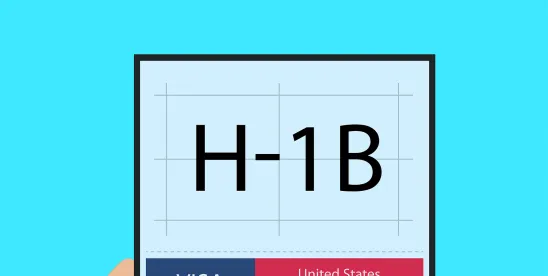The Department of Homeland Security (DHS) has submitted a proposed rule to the Office of Information and Regulatory Affairs (a division of the Office of Management and Budget) that would replace the current H-1B lottery system with a weighted selection process. This regulatory development may have significant implications for U.S. employers, foreign students, and current H-1B workers.
On July 17, 2025, DHS-USCIS submitted for OMB review a proposed rule titled “Weighted Selection Process for Registrants and Petitioners Seeking To File Cap-Subject H-1B Petitions” (RIN 1615-AD01).
The H-1B program provides 85,000 annual visas for specialty occupation workers, including 20,000 reserved for advanced U.S. degree holders, and is currently subject to random lottery selection when demand exceeds supply.
Potential Changes and Selection Criteria
While the specific provisions remain confidential pending Federal Register publication, the proposed rule is expected to implement selection criteria that may include wage levels, education qualifications, or other merit-based factors. Historical precedent suggests the rule could prioritize registrations based on prevailing wage levels corresponding to the Department of Labor’s four-tier wage structure.
The rule submission occurs as USCIS announced that sufficient registrations have been received to meet the FY 2026 cap, indicating continued high demand for H-1B visas among U.S. employers.
Potential Impact on U.S. Employers
Hiring Strategy Adjustments: Employers may need to reassess compensation packages and position classifications to improve selection probability under a weighted system. Companies historically offering entry-level wages may face reduced selection rates.
Budget and Planning Implications: Organizations may need to increase salary offers to meet higher wage thresholds, potentially affecting budgets for international talent acquisition and workforce planning strategies.
Compliance Considerations: Employers will need to ensure accurate wage determinations and classifications align with any new selection criteria, requiring closer coordination between HR, legal, and compensation teams.
Potential Impact on Foreign Students and Current H-1B Workers
F-1 Students: Recent graduates may face increased competition for positions meeting higher selection criteria. Students in STEM fields with advanced degrees may have advantages, while those seeking entry-level positions could encounter greater challenges transitioning from student to work status.
Current H-1B Workers: Extension and transfer petitions may be affected depending on wage levels and position classifications. Workers in lower wage categories may need to seek promotions or position changes to maintain competitiveness in future selections.
Career Planning: Foreign nationals may need to adjust career trajectories and salary expectations to align with weighted selection criteria, potentially affecting decisions about educational investments and job market entry strategies.
Regulatory Context and Historical Background
A similar wage-based selection rule was finalized in January 2021 but was subsequently vacated by a federal court and withdrawn by the succeeding administration. That rule would have prioritized selections based on the highest Occupational Employment Statistics prevailing wage levels for relevant Standard Occupational Classification codes and employment areas.
The current regulatory landscape includes the beneficiary-centric selection process implemented in March 2024, which selects registrations by unique beneficiary rather than by individual registration. The interaction between this existing framework and the proposed weighted selection system will require careful analysis upon rule publication.
Anticipated Implementation Timeline and Process
OMB Review: The proposed rule is currently under Office of Management and Budget review, which typically takes up to 90 days but may vary based on rule complexity and stakeholder input.
Public Comment Period: Following OMB clearance, the rule will be published in the Federal Register with a public comment period, typically lasting 60 days.
Final Rule Development: DHS must review and respond to public comments before issuing a final rule, with implementation dates typically 30-60 days after final publication.
Compliance and Preparation Considerations
For Employers:
- Review current H-1B positions and wage classifications against Department of Labor prevailing wage data
- Assess potential budget impacts of wage adjustments
- Develop strategies for position restructuring or compensation adjustments
- Prepare for enhanced documentation requirements that may accompany weighted selection
For Immigration Practitioners:
- Monitor Federal Register for rule publication and specific selection criteria
- Prepare client advisories on potential changes to filing strategies
- Review portfolio of cases for potential impacts on current and future filings
- Develop templates for revised petition strategies under new selection criteria
For Foreign Workers:
- Evaluate current position classifications and wage levels
- Consider timing of career advancement or position changes
- Assess educational credentials and their alignment with proposed criteria
- Plan for potential impacts on renewal and transfer petitions
Operational Considerations
The proposed rule, if implemented, may affect H-1B registration and petition filing strategies, requiring adjustments to employer practices and expectations. Organizations should consider preparing for potential changes to selection probability calculations and developing contingency plans for workforce planning under modified selection criteria.



 />i
/>i
